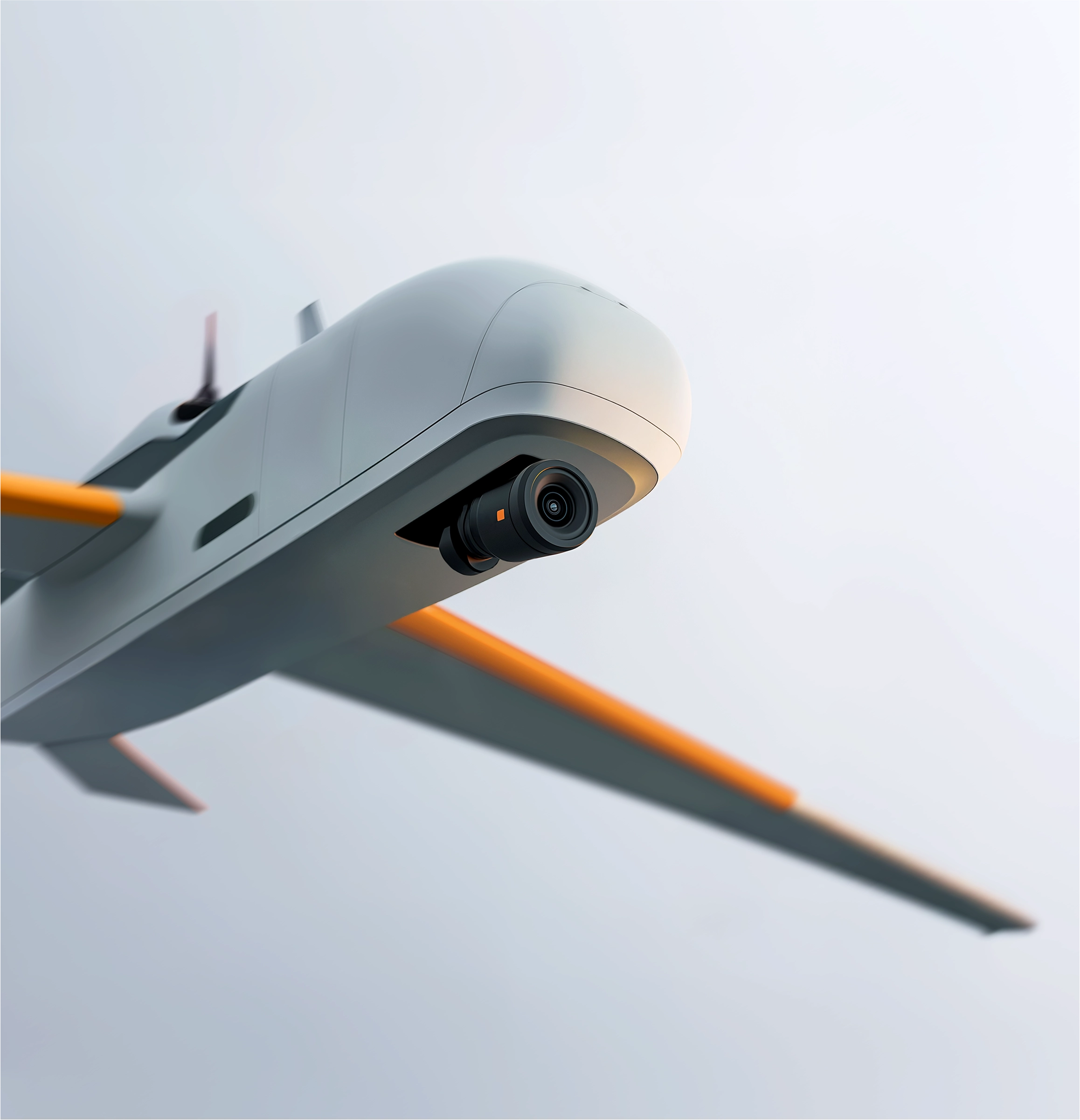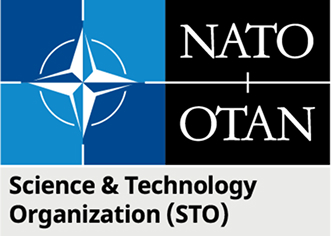Emerging and disruptive technologies (EDTs) are revolutionising every aspect of life – from the electronics we use to how we shop, bank, and communicate. These innovations are transforming security while unlocking new opportunities for NATO militaries to become more effective, resilient, cost-efficient, and sustainable. But they also bring fresh threats that impact both military and civilian sectors. To counter these risks and harness the benefits, NATO is collaborating with Allies, academia, and the private sector to develop responsible, agile EDT policies that maintain its technological edge and military superiority.

Artificial Intelligence

Implications
Economic Implications – AI is expected to contribute over $15.7 trillion to the global economy by 2030, and has already enhanced business analytics efficiencies and driven scientific, mathematical, and engineering discoveries. Recent breakthroughs include large language models (LLMs) and advanced text-to-image models generating highly realistic images. Insufficient numbers of AI professionals in many countries, however, could hinder some nations in competitive global markets.
Military Implications – AI is already being used to power advanced cyber-attacks, electronic warfare, and digital disinformation, and provide commanders with improved intelligence analysis. Eventually, AI may allow a single operator to control swarms of uncrewed vehicles for intelligence, surveillance and reconnaissance (ISR), and combat missions. Sophisticated real-time automated data analysis from sensor inputs will provide critical decision support and enhanced actionable intelligence, target detection and recognition. Additionally, AI will improve training capabilities through virtual and augmented reality (VR/AR), and highly realistic modelling and scenario planning.
Societal Implications – Unregulated generative AI could majorly propagate disinformation. Believable ‘deep fake’ videos of public figures and AI-supported disinformation campaigns are already disrupting the political landscape. AI is also likely to impact labour markets and make certain roles that entail routine, repetitive tasks (including manual manufacturing, data entry, customer service and basic administrative support) redundant. Current AI models have raised ethical concerns around biased data inputs, lack of transparency on how outputs are created, and the use of LLMs by malign actors intending to cause harm. Trust in AI is crucial for widespread adoption and, as such, the technology needs to be reliable, safe and transparent. ‘Explainability’, or the ability of AI to provide understandable reasons for decisions, as well as training and education, will be key for building trust.
Key Technology Areas
Deep Learning and Neural Networks – A subset of machine learning, these networks emulate brains’ computational processes. They are highly adaptable, have broad applicability, and are capable of continuous learning. Research is currently focused on enhancing AI systems’ agility and resilience. One approach is to increase data volume through federated learning (or collaborative learning) to train future computer models on de-centralised datasets, while another is to streamline cumbersome data labelling for training purposes. Additionally, there are efforts to integrate a baseline level of “machine common sense” for more effective, robust, and agile systems with human-like reasoning.
Applications – AI will have an extremely broad range of applications, integrating and advancing many systems, processes and defence capabilities. This will enable new scientific methods, driving scientific discovery. Human-machine teaming, an effective psycho-social-technical collaborative system, is crucial for future AI applications, for which reproducibility and trust will require research.
Counter-AI – Detecting, deflecting, and limiting attacks on the Alliance’s AI systems and defending against adversarial AI are becoming increasingly necessary. For example, AI-on-AI engagements are gradually emerging, driving disinformation. Furthermore, potential for criminal uses of AI is underappreciated. While AI currently excels under specific conditions, it can fail with slight deviations from expected parameters. Assessing reliability is difficult, yet vital for enhancing resilient and validated AI to counter adversarial AI. Deception of AI will hence become a significant aspect of future warfare.
Technology Convergence
Robotics and Autonomous Systems – Data, Autonomy, and AI are expected to significantly disrupt military capabilities over the next decade. The proliferation of ubiquitous, intelligent and interconnected sensors will facilitate AI-assisted decision-making in cyberspace and physical domains. Physically, these will include autonomous aerial, naval and ground vehicles, and swarms. VR, autonomy and AI will facilitate surveillance, cyber defence, electronic warfare and signals intelligence, collecting data autonomously and implementing countermeasures.
Biotechnology, Materials and Energy – AI will contribute to the design, development and manufacturing of novel materials with unique properties, and also the direct manipulation of both biological and chemical reactions. This will lead to numerous dual-use applications that are of interest to NATO, ranging from biotechnologies and 3D/4D (bio)printing, energy storage, power generation and propulsion systems.
Robotics and Autonomous Systems

Implications
Economic Implications – Increased automation will prompt economic transformation in many sectors. In transport, autonomous vehicles could drastically reduce labour costs, increase efficiency, transform logistics, and deter accidents. In manufacturing, production speeds could improve, and errors and operational costs could decrease. In agriculture, seed-planting robots and autonomous farming equipment promise higher crop yields with reduced labour and environmental impact. These advancements may cause economic disruption, particularly in the labour market. Many jobs could be displaced, necessitating significant workforce retraining.
Military Implications – Growth in robotics and autonomous systems (RAS) use has been concentrated in the air domain, but the land and maritime domains’ use in logistics, sustainment, and manufacturing are growing increasingly important. Intelligent autonomous systems will enable novel capabilities, including long-duration under-water operations or operations in extreme or GNSS (Global Navigation Satellite System)-denied environments. Autonomous systems could also increase the impact of cyber-attacks while offering new ways to defend against them. However, in the near-term, semi– autonomous, rather than fully autonomous, systems will be of greater interest to NATO.
Societal Implications – How societies balance technological innovation with social and employment needs will determine the benefits of autonomous systems. Trust, reliability, safety and transparency are crucial for widespread adoption. ‘Explainability’ (systems’ ability to provide understandable reasons for their decisions), as well as training and education, will be key to building trust. Clear regulations, ethical guidelines and security measures are required to address concerns about autonomy and accountability. However, semiautonomous systems will continue to develop long before safe full autonomy is realised.
Key Technology Areas
Counter-RAS – Research on combatting uncrewed threats through kinetic and directed non-kinetic effectors is growing. Rapid detection, classification and tracking require advanced sensors and software to enable cost-effective RAS-on-RAS engagements, as vehicles may be too fast for direct human control. In particular, research is advancing in AI-enabled swarm-on-swarm engagement, advanced detection sensors and electromagnetic counter-RAS capabilities. High-powered radio-frequency-directed energy weapons are a promising area of non-kinetic counter-RAS.
Levels of Autonomy – Despite their adaptability and advanced decision-making capabilities, autonomous systems will likely involve humans in a supervisory role, while reducing the need for human brain power. For example, the ‘warfighter as a system’ concept foresees human-machine systems that allow every soldier to act as a squad. In the cyber domain, autonomous software agents will increasingly undertake offensive/defensive operations. Notably, NATO Allies have committed to ethical use during military operations.
Human-RAS Teaming – Research exploring the interaction between humans and machines in future semi- and fully autonomous systems is plentiful. This research recognises that humans cannot fully synthesise and act on the volume of information presented, nor control the autonomous collection of data. Therefore, more effective interaction between AI, RAS and humans will enhance operations. It is important to consider the need for human control, and AI’s ability to assess the trustworthiness of a human operator’s input.
Technology Convergence
Biomimetics, Energy and Propulsion – Nature inspires functional and behavioural aspects of robotics. Examples include the mimicry of animal swarming, or of insect neurons (which could enable real-time spatial tracking of multiple moving objects). Reduced energy requirements facilitate low-power control systems, improving size, weight, power and cost and drastically reducing the trade-offs between these factors.
Artificial Intelligence and Quantum – AI will be increasingly embedded in warfare platforms, systems and weapons across land, sea, air, space and cyber domains. AI-enabled systems can process vast data in real time, improving awareness and response times. Machine learning enables systems to learn from experience and adapt to situations. In autonomous systems, AI improves coordination between units, enabling swarming behaviour and complex collaborative missions. Advances in quantum computing and quantum sensors enhance the secure processing speed of AI and associated sensors, facilitating improved autonomous systems.
Quantum

Implications
Economic Implications – Unprecedented advances in quantum technologies are predicted to significantly impact all key economic sectors in the next decade. Specifically, significant focus will be placed on accelerating computer processing capabilities. For this reason, there is currently a global economic race, with various countries vying to be the first to design, create and deploy this technology.
Military Implications – Emerging quantum sensors can provide extremely accurate PNT capabilities, especially in areas where Global Navigation Satellite System (GNSS) is denied. There’s potential for gravimetric (or magnetic) sensors to reliably detect submarines and subsequently make the ocean more ‘transparent’, while new radars could make allied stealth capabilities ineffective. Quantum communications and cryptography can create ultra-secure networks (for example, with intrusion detection and low probability of intercept), but quantum computing also poses challenges for protecting our own sensitive communication from adversaries. Assisted by AI, quantum modelling and simulation will have the capacity to aid complex decision-making, improve target identification, and fine-tune the accuracy of weapons systems.
Societal Implications – Quantum sensing can enable accurate, real-time monitoring of biological processes, accelerated drug discovery, medical imaging, and disease detection. Advances in quantum communications are considered to be essential for developing effective 6G technologies. Quantum computing could also support the development of new sustainable, environmentally friendly materials, thus helping to reduce and offset emissions by improving energy storage and driving more carbon-neutral methods of energy production.
Key Technology Areas
Computing – Quantum computers harness the power of superpositions and entanglement at the sub-atomic level, and could therefore exploit untapped potential for exponential growth in computing power. As such, quantum processors are likely to become a key part of the next generation of supercomputer systems.
Communications – Quantum technologies that exploit entanglement (a key principle of quantum mechanics), such as quantum key distribution (QKD) and quantum random number generators (QRNG), are developing at an unprecedentedly rapid rate. It is also notable that, while next-generation post-quantum encryption techniques already exist and are likely to enhance rather than replace existing secure communications networks, they still require verification and standardisation.
Sensors – Quantum sensors are the most developed of the three key quantum technologies, and may greatly exceed the capabilities of their classical counterparts in measuring magnetic, electric, and gravitational fields with substantially increased precision. These types of sensors include technologies such as atomic clocks, gravimeters, accelerometers, magnetometers, optical sensors and GHz-THz radiation detectors.
Technology Convergence
AI, Electronics, Energy, Materials, Space and Hypersonics – Quantum technologies converge with a large number of other EDTs. In particular, quantum computing will have a strong impact on training for robotics and autonomous systems, significantly optimizing these processes. It can additionally enhance AI-enabled software, and facilitate better modelling and simulation for additive and advanced manufacturing. This in turn would support the development and testing of AI, hypersonics, energy systems, materials, electronic systems and biotechnologies. Quantum communication and sensing will also have a significant impact on space technologies, with improved accuracy, security and sensitivity and an increased use of passive sensors.
Space Technologies

Implications
Economic Implications – Space capabilities are predominantly driven by the commercial sector, while new technologies and production methods have optimised the availability and cost of accessing space. Space-derived data and connectivity is the main driver of commercial space use. The number of active objects in orbit has more than tripled since 2020, and the global space industry is expected to grow considerably by 2040.
Military Implications – Increasing military reliance on space technologies requires nations to protect their critical space-based assets. Space is a key enabler of military operations, primarily for Global Navigation Satellite Systems (GNSS), ISR and communications. Increasing sensor resolution will further emphasise space as an operational domain. GNSS jamming has been extensively used and several Anti-satellite (ASAT) weapon tests have raised concerns of a future space arms race.
Societal Implications – With increasing civilian usage and the prospect of a potential space arms race, the governance of space is a pressing concern. A more contested and congested space environment may lead to conflicts between different commercial and governmental/military actors, as well as conflicts of interest over the use of individual space assets for different purposes. Civilian trends will also likely lead to increased accessibility of human spaceflight, planetary exploration and greater availability of space-based surveillance. Increasing space debris (from collisions or ASATs) is also expected to cause a chain reaction in which the amount of space debris exponentially increases to the point of being unstoppable. This reaction is likely to not only cause catastrophic service disruptions, but it could also render affected orbits unusable (hence making repairs extremely difficult if not impossible).
Key Technology Areas
Communications and Sensors – Satellites in low geostationary orbits are used for communications, command and control, navigation and ISR, and are a critical asset in support of military operations. The development of miniaturised, light-weight, low-power, wide-band sensors for communications and remote sensing will improve operational effectiveness. As the radio frequency spectrum becomes more congested, next-generation space communications and sensors, such as laser communications relays and synthetic aperture radars, will greatly enhance space-based situational awareness and communication capabilities.
Platforms and Propulsion – Somewhere between 18,000 and 26,000 small satellites are expected to be launched in the next decade, increasing both space congestion and the risk of collisions. Overall, these developments will drive demand for In-Orbit Servicing platforms and more sophisticated space traffic management systems. Meanwhile, in-orbit assembly combined with improved rapid, reusable launch systems and propulsion technologies could reduce costs and increase the number of space launches.
Counter Space – As increasing civilian and military applications harness space-based assets, the risks from ASAT systems will increase Allies’ vulnerability. Developments in “inspector” satellites, dazzlers, directed energy weapons, cyber-attacks, and jamming increase the need to harden space-based infrastructure across the cyber, electromagnetic, and physical spectrums. These issues will be critical as space continues to become more contested, congested and militarised. Developments such as ultra-secure quantum key distribution, and physical and electromagnetic defensive capabilities will be needed to enhance resilience of space assets.
Technology Convergence
Energy, Propulsion, Materials and Hypersonics – Significant improvements are expected in propulsion technologies from chemical (low efficiency, high thrust) to electric (high efficiency, low thrust), and in development of nuclear thermal propulsion. Cheaper and more rapidly (re)usable launchers are expected to benefit hypersonic systems – as would exotic materials, energy storage, miniaturisation, novel designs and manufacturing methods for space assets.
Artificial Intelligence, Autonomy and Quantum – Increased autonomy and embedded AI can improve space data collection and management, onboard processing, and inter-satellite coordination. Currently, power limitations and sensor sensitivity severely restrict satellite design and operation. Space-based quantum sensors, data processing capabilities and quantum communication will further enhance space-based assets. Additionally, actively collaborating satellites (such as constellations and swarms) will increase operational effectiveness.
Hypersonics

Implications
Economic Implications – The most immediate impact of advances in hypersonics will be felt in the defence industry and, for the time being, less so on civilian transportation applications. Due to the very high up-front investments required, the number of commercial actors is limited, and progress is primarily driven by government investments motivated by security needs. Nevertheless, significant investments are being made, with possible secondary economic applications in the transport and logistics sectors likely to take off in the medium to long term.
Military Implications – Hypersonic capabilities would make some weapons’ designs less complex by harnessing the power of kinetic impact energy rather than explosive warheads. Furthermore, hypersonic speeds reduce early-warning and response times further, as their non-ballistic trajectory poses further challenges to detection and effective defence, since hypersonics spend less time in general above the atmosphere.
Societal Implications – The social implications of hypersonic systems are limited. However, given the substantive investments needed for a country to successfully design, develop and deploy these systems, they may lead to secondorder effects on government spending, and subsequently cause impacts on economic and social security frameworks.
Key Technology Areas
Vehicles and Propulsion – Hypersonic vehicles encompass a range of technologies including aircrafts, missiles, projectiles or spacecrafts. They are divided into four main types of system:
- Boost glide vehicles, which are launched by rocket but then manoeuvred in the atmosphere at altitudes of 40-100 km, have made remarkable progress and research is currently focusing on reducing the cost of this technology.
- Hypersonic cruise missiles (HCM) are typically airlaunched and powered by scramjets (supersonic combusting ramjets) that need to reach Mach 3 or 4 to become operational. These missiles fly at altitudes of 20-30 km.
- Rail guns are systems that use an electromagnetic field to accelerate projectiles at hypersonic speeds. They are intended to engage time-critical targets over longer ranges, augment surface-to-air capabilities against very fast-moving targets, and intercept ballistic missiles. They have a major advantage in their relative affordability, and have no reliance on chemical energy sources.
- Hypersonic aircraft have shown encouraging results, with dual-mode ramjet systems potentially enabling transformational aircraft and RAS capabilities.
Counter-Hypersonic Systems – The speed, manoeuvrability and trajectory of hypersonic systems, coupled with the possibility of large swarms of hypersonic effectors, pose noteworthy challenges to defensive efforts. Countermeasures include both soft-kill approaches such as jamming or decoys, and hard-kill ones, such as directed energy weapons or physical interceptors. These systems will need to be refined and operationalised to maintain the current deterrent framework in a future era of strategic hypersonic capabilities.
Technology Convergence
Space, Quantum and Artificial Intelligence – Countering hypersonic threats will require an advanced space-based sensor network for detection, identification and tracking of such threats, which, with the support of terrestrial sensors, can then provide navigation and control for successful interception. Such sensors and control functions will be further enhanced by quantum technologies and AI applications, thereby enabling shorter response times.
Propulsion and Materials – The speed of hypersonic vehicles can cause their surface temperatures to exceed 1000°C. As a result, the development of mechanically strong and heat-tolerant materials is necessary for the implementation of these vehicles. There are promising research activities being conducted for these materials, considering both novel materials and advanced manufacturing. Advances in the underlying propulsion technologies, such as supersonic combustion ramjets (scramjets) or dual-mode engines that can switch from fuelefficient turbine operation to ramjet mode, will support transformational changes for civil and military applications.
Biotechnology & Human Enhancements

Implications
Economic Implications – Synthetic biology and biotechnology advances bring economic implications and potential disruptions. Agriculturally, developments may increase food yields and crop resilience, and reduce environmental impacts. For healthcare, personalised treatments and medications, new diagnostics and regenerative methods may become ubiquitous, while the production of biological products (hormones, enzymes, antibodies, vaccines) could become cheaper. Novel bio-manufactured materials and chemicals provide alternative, environmentally-friendly routes to synthesise energetics, propellants, and plasticisers.
Military Implications – Military use of biotechnologies applies to human enhancements across cognitive, physical and social performance benchmarks, and synthetic-biology military products (e.g. smart textiles, living sensors or power systems). New materials with advanced properties could facilitate more lightweight and durable armour or better chemical, biological, radiological, and nuclear (CBRN) defences. Advances in trauma medicine, psychological treatments and regenerative medicine are particularly important for sustaining soldiers’ capabilities. Synthetic and physiological enhancements could revolutionise future soldiering.
Societal Implications – Biotechnology applications are driving society-wide benefits. Biofuels are a promising source of energy, environmental sensors may allow rapid detection of harmful chemicals, and genetically modified organisms have many applications, bringing medical benefits. Potential unintended consequences and the ethical, moral, and legal risks of altering biology are significant. Existing inequalities may be exacerbated by limited access to enhancements. Equally, privacy concerns, consent to the use of genetic information, and ethical research practices must be safeguarded.
Key Technology Areas
Genetics and Bioengineering – Genetic engineering and synthetic biology are driving efforts to enhance human performance and create functional (bio)materials. CRISPR (Clustered Regularly Interspaced Short Palindromic Repeats), for instance, is now an established gene-editing tool. Gene reading, writing and editing (as well as bioengineering, and biomanufacturing processes and products) are expected to become more accessible over the coming decades. Biotechnology applications are increasingly replacing oil refining to produce commodity chemicals, including energetics and propellants. Up to two-thirds of the world’s most commonly used chemicals could eventually be synthesised from renewable resources.
Bioinformatics and Biosensors – Bioinformatics describes the analysis of biological systems through large-scale data collection on the interactions between components of that system. Areas of interest include CBRN biological sensors, medical treatment monitoring and computational biology. New biosensors that measure biological or biochemical phenomena (immunological, pressure, thermal, etc.) have contributed to the volume of data available, as sensors have become cheaper and more accessible. Technologies for human physiological monitoring are already commercially available, and advanced sensor packages will mature in the medium term.
Cognitive, Physical and Social Enhancements – Cognitive enhancement is a key human application of biotechnology, requiring advances in brain-machine interfaces and understanding of the brain. Novel neurological and psychiatric treatments are expected to emerge from research, particularly for PTSD or cognitive recovery. Additionally, enhancement of strength, endurance, pain and fatigue tolerance has been a long-standing military goal. There is also significant research around modelling and simulating social dynamics to counter disinformation, cognitive, and hybrid warfare campaigns.
Technology Convergence
Artificial Intelligence and Quantum – Advances in biomimetic technology applications will enable the development of other biotechnology and human enhancement technologies, such as new biological agents that are designed and created molecule-by-molecule or cell-by-cell. These developments would greatly expand our ability to tailor-make pharmaceuticals or (synthetic) organic replacement parts or inspire new advanced computing approaches.
Materials, Energy and Electronics – Novel materials and manufacturing offer synthetic biology with improved properties and biomanufacturing opportunities. Additionally, biomanufactured fuels from renewable organic molecules may soon be a viable alternative to fossil fuels, while genetic engineering is enabling a class of living sensors with new capabilities, either integrated into biocomputing frameworks or in place of both active and passive sensing systems.
Novel Materials and Advanced Manufacturing

Implications
Economic Implications – With the increasing scarcity of rare earth minerals and global competition over access to them, novel materials could provide solutions for products critical to the development of key technologies. Moreover, additive manufacturing and biomanufacturing (both separately and combined) could revolutionise industries, including construction, electronics, consumer goods, food and pharmaceuticals, by securing supply chains, increasing flexibility, and reducing costs and production times. The range of economically transformative opportunities is enormous, mirroring that of the effects of AI in the cyber domain.
Military Implications – 2D materials, additive manufacturing (i.e. 3D printing), unique designs, smart materials, nanotechnologies and biomanufacturing will have a wide range of applications from electronics to clothing. New materials will facilitate unprecedented designs, providing environmentally friendly, cost-efficient alternatives to current designs.
Societal Implications – Additive manufacturing enables mass application of customised products, more localised production and simplified global supply chains. Standardised products can therefore significantly reduce prices and improve accessibility of sought-after, expensive items (especially healthcare products). Alongside novel materials, they can also drive large-scale sustainability gains like waste reduction and energyefficiency increases in production and consumption.
Key Technology Areas
2D Materials – With the discovery of graphene in 2004, 2D materials – including novel polymers, nanoscale materials and metamaterials (not found in nature) – have a wide range of mechanical, physical, chemical and electrical properties not found elsewhere. For example, graphene is one of the thinnest, strongest and most stretchable known materials. This makes 2D materials particularly impactful, and potentially disruptive for aerospace, electronics, energy storage, camouflage, protection, weapon technologies, sensors and portability applications, etc.
Additive Manufacturing & 3D/4D Printing – 3D printing processes add materials in an iterative way to build objects from digital models. Significant research advances have been made in recent years and continue, including in the promising area of biomimetics (e.g. replication of biological structures). 4D materials are 3D prints that can transform under changing environmental stimuli (pressure, heat, humidity, etc.). Such materials hold promise for new designs or sensors, particularly in biomedical applications. The future of 3D/4D printing will include the synthesis, assembly and construction of materials down to the nanoscale, i.e. nanofabrication.
Biomanufacturing – The possibility of directly manipulating and engineering biological systems and their products has opened up new approaches and opportunities for the use of biotechnologies. Engineered biological agents (cells, proteins, fungi, etc.) can be used to assemble or build a wide range of products – from pharmaceuticals, organs, human tissues or leather and concrete – enabling unique manufacturing and largescale production capabilities. Specialised biorobots or xenobots for nanoscale manufacturing are also at an early stage of development.
Technology Convergence
Artificial Intelligence (AI) and Quantum – Advances in biomimetic technology applications will enable the development of other biotechnology and human enhancement technologies, such as new biological agents that are designed and created molecule-by-molecule or cell-by-cell. These developments would greatly expand our ability to tailor-make pharmaceuticals or (synthetic) organic replacement parts or inspire new advanced computing approaches.
Energy and Biotechnologies – Biomimetic designs inform the creation of novel materials, as well as new (bio)manufacturing processes and applications of synthetic biology. Examples include the creation of novel synthetic or modified biological components or systems that can be (3D) bioprinted (e.g. organs, skin etc.), or the development of multicellular biosensors, biofuel energy systems or novel battery technologies.
Space and Hypersonics – Lighter, stronger and more durable novel materials and the ability to manufacture them will enable the development of new space launch capabilities, satellites and sensor systems, as well as hypersonic weapons and uncrewed systems that can operate at hypersonic speeds. This will increase the overall cost-effectiveness and durability of space assets and hypersonic systems, while improving operational effectiveness.
Energy and Propulsion

Implications
Economic Implications – Research and development for an eco-friendly economy is increasing, and is expected to drive greater use over renewables as they become more cost-effective and profitable. Government investment and large economies’ strategies will drive a race to develop environmentally friendly technologies and address energy needs. These developments may require new regulatory frameworks, taxation and incentives.
Military Implications – Military operations have traditionally been energy-intensive and reliant on fossil fuels. With increasing competition and geostrategic challenges to global energy supplies, Allies have agreed to enhance energy security and invest in stable, reliable energy supplies and sources. Strategically, competition is escalating for access to rare earth elements, and cleaner ore processing capabilities needed for renewable energy technologies. Reliance on next-generation energy solutions will require the integration of renewable energy and battery systems into defence infrastructures and national power grids.
Societal Implications – The pace of renewable energy-source development will determine the speed and effectiveness of climate change solutions. Factors like clean air and access to water have far-reaching implications for human health and well-being. The transport sector will play a major role in developing newer, cleaner, more efficient propulsion technology. Access (or lack thereof) to clean, affordable energy could alleviate or exacerbate inequality and economic competitiveness. To meet these challenges and develop new energy technologies, it will be crucial to re-skill and up-skill the workforce.
Key Technology Areas
Power Generation – Clean energy generation is advancing rapidly due to technological advances mitigating the effects of climate change, rather than those focused on military applications. These technologies should be adapted to support NATO’s climate objectives. Solar power is now economically competitive with fossil fuels due to increased research on thin-film flexible solar cells, for example. Biofuels using existing infrastructure are also promising, although the potential for environmental damage must be addressed. Nuclear power, despite reputational challenges, offers solutions such as Small Modular Reactors (SMRs) and accident-tolerant technologies (e.g. thorium-based molten salt reactors).
Storage and Transmission – Rising demand, reliance on intermittent sources and the limitations of dominant lithium-ion batteries are driving research into new energy storage technologies like lithium-sulphur or sodium-ion batteries, which may offer lower degradation and higher energy density. Supercapacitors provide energy storage without relying on electrochemical mechanisms, but still face significant limitations. Energy security for militaries is essential, as they rely on civilian power grids. As such, wireless power transfer and localised microgrids are expected to enable further improvements.
Propulsion – Vehicle electrification is key to the carbon-neutral energy transition – due to commercial innovation, electric ground vehicles are rapidly gaining market share. Electric aircraft prototypes, some of which are close to starting larger production, are in development. Space propulsion technologies, including chemical, solar, electric, and nuclear, are evolving rapidly to deliver cost reductions, increased endurance/reliability, and extended mission timespan. Combined-cycle engines (low-speed turbojets transitioning to high-speed scramjets) may also enable crewed hypersonic flight in the atmosphere.
Technology Convergence
Artificial Intelligence and Materials – Developments in energy storage, driven by novel materials such as graphene and exotic battery chemistry, as well as stronger lightweight materials, novel designs and advanced manufacturing (e.g. supercapacitors or 3D printing), will drive electrification or the use of green fuels (e.g. biofuels) in military operations. AI applications to support these designs and material developments and optimise energy usage will contribute to lower carbon emissions of NATO activities.
Biofuels and Space – In coming years, alternative fuels from biological sources (often plant-based) will be used in the aviation and shipping industries, as well as for specific military tasks such as fuelling autonomous vehicles or powering remote operating bases and assets. New space propulsion technologies (e.g. nuclear thermal propulsion and nuclear power) will support deep space exploration and extend the lifespan and capabilities of satellites. Space-based solar farms may also provide a new, sustainable source of energy.
Next Generation Communication Networks

Implications
Economic Implications – The importance of communication in the civilian sector will have an effect on the adoption of such dual-use technologies. The contribution of private investments in research will boost the development of technologies ready for military applications.
Military Implications – The range of deployment of autonomous systems with man in/on the loop can be significantly extended with NGCN technologies. The possibility of securing reliable communications with underwater/underground assets, represents a critical enabler across all military domains from seabed to space.
Societal Implications – The increased capabilities guaranteed within autonomous systems will be particularly useful in scenarios like natural disasters, emergency response or infrastructure inspections, where quick deployment of reliable communication networks is essential.
Key Technology Areas
5G/6G – 5G/6G technologies are characterised by low latency and high-speed data transmission capabilities that enable real-time control and communication between sensor grids, autonomous systems, and AI-driven analytics. This allows decentralised (or federated) data processing, rather than relying solely on centralised data centres. 6G, in particular, presents significant advancements in data transmission speeds and frequency bands up to 100 Gbps, 20 times faster than 5G technology. This speed and capacity can support applications such as ultra-HD video streaming and real-time control or direction in autonomous vehicles, meeting increasing communication demands.
Next-Generation Networks (NGNs) – NGNs are a modern type of network infrastructure that allows the transmission of different types of information into small units that can be fast and easily distributed. New network technologies need to face the challenges of low-probability of intercept, hiding traffic in commercial signals, integrating sensor networks, communication links, and processing to drive the need for Command, Control and Communication warfare or multi-domain battle networks. The increased reliance on data, networks, sensors, and analytics also presents significant cyber vulnerabilities.
4D Antennas –4D antennas promise improvements in performance and enable long-range wireless communications, including underground and underwater. The antenna arrays are manipulated so that individual elements are selectively turned on and off, creating unique and useful sidebands, which are suitable for multi-channel transmission and smart beamforming.
Low-Frequency Transmission – Ultra Low Frequency (ULF, 0.3 kHz to 3 kHz) and Very Low Frequency (VLF, 3 kHz to 30 kHz) are beneficial frequencies for underground and underwater communications. Normal antennas require huge spaces that can be reduced considerably using mechanically manipulated magnetic/electrical fields.
Post-Quantum Encryption – Communications can be secured with cryptographic methods using quantum properties to provide intrusion detection. Post-quantum cryptography uses enhanced encryption algorithms that are not amenable to solutions by quantum computers.
Technology Convergence
Energy – The increasing power requirements of 5G systems and other communication technologies will require collaborative development of new exploitable energy nets/sources.
Autonomy – Given the communication opportunities offered by NGCN, a coherent development of unmanned aerial vehicles (UAVs), unmanned ground vehicles (UGVs), and maritime unmanned systems (MUS) will benefit from seamless coordination and real-time communication.











